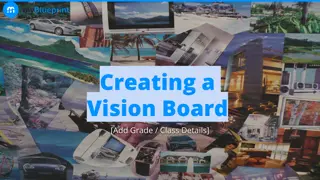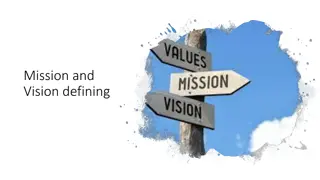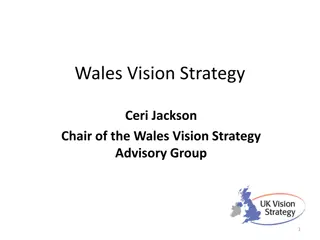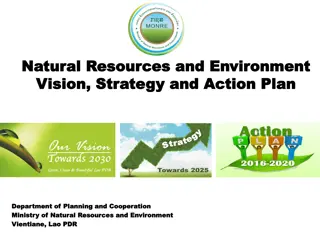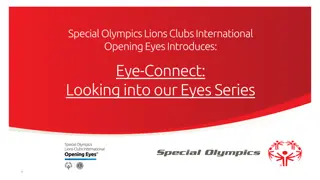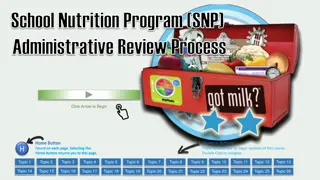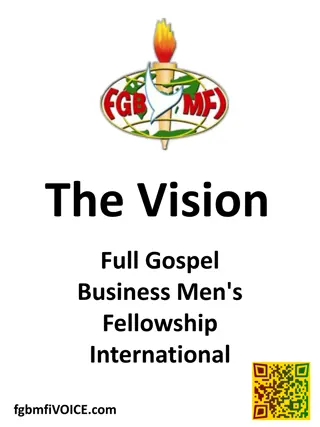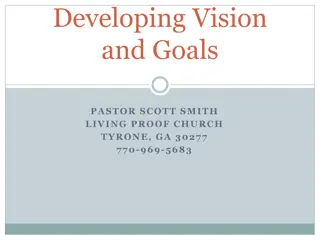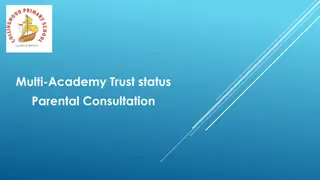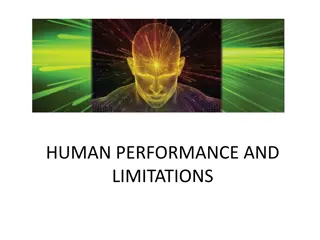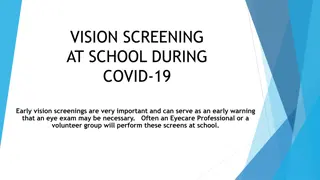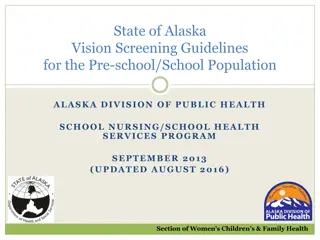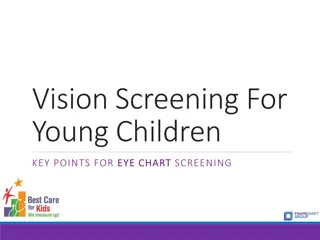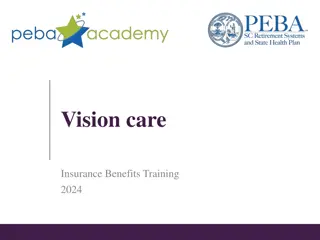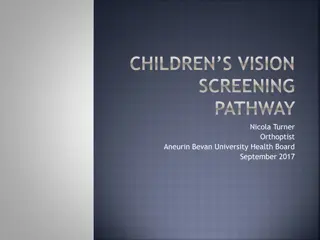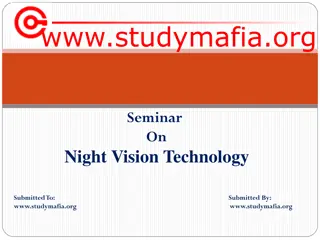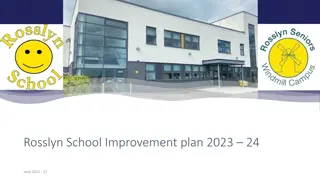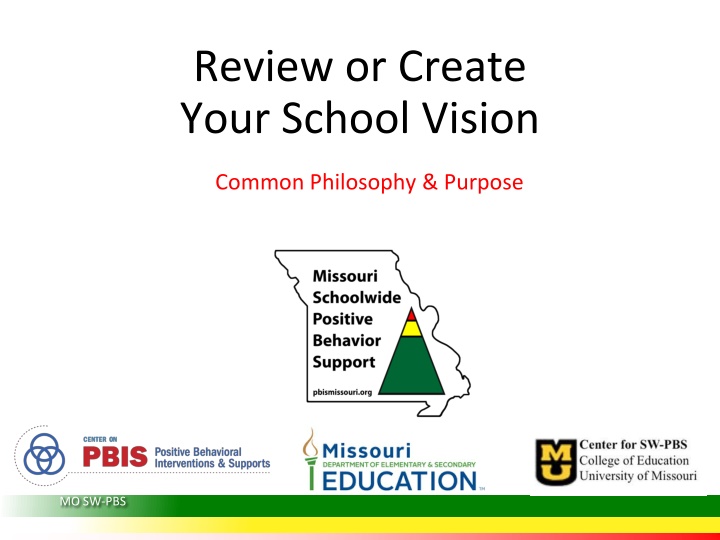
Crafting a Collective School Vision for Enhanced Social Competence
Explore the process of developing a shared vision statement in the educational setting to foster student social competence and strengthen school community engagement. Understand the significance of aligning vision with values and beliefs for effective implementation of Positive Behavior Support strategies.
Download Presentation

Please find below an Image/Link to download the presentation.
The content on the website is provided AS IS for your information and personal use only. It may not be sold, licensed, or shared on other websites without obtaining consent from the author. If you encounter any issues during the download, it is possible that the publisher has removed the file from their server.
You are allowed to download the files provided on this website for personal or commercial use, subject to the condition that they are used lawfully. All files are the property of their respective owners.
The content on the website is provided AS IS for your information and personal use only. It may not be sold, licensed, or shared on other websites without obtaining consent from the author.
E N D
Presentation Transcript
Review or Create Your School Vision Common Philosophy & Purpose MO SW-PBS
Facilitator Notes: Delete This Slide Handouts Needed: Example and Activity Vision Statement Tier 1 Action Plan Tier 1 Artifact Rubric Tier 1 Action Planning Checklist Participants Need Access to: MO SW-PBS Handbook MO SW-PBS Tier 1 Implementation Guide MO SW-PBS
Working Agreements Be Respectful Be an active listener open to new ideas Use notes for side bar conversations Be Responsible Be on time for sessions Silence cell phones reply appropriately Be a Problem Solver Follow the decision making process Work toward consensus and support decisions of the group MO SW-PBS
Attention Signal MO SW-PBS
Introductions MO SW-PBS
Lesson Outcomes At the end of this session, you will be able to review and/or create a vision statement to verify that it addresses the development of student social competence. MO SW-PBS
Vision Statements A vision is a clearly articulated, results-oriented picture of the future you intend to create. MO SW-PBS, 2019 MO SW-PBS
Big Ideas Unlike a mission that is practical, a vision is idealistic. A vision focuses on the end results and values, not on the specific means of getting there. A vision is the crystallization of your whys, desires, values, and beliefs. It is critical as you begin implementation of SW-PBS that the importance of focusing on student social competence is addressed within the vision statement. MO SW-PBS
Developing a Common Vision When a school collectively develops and owns a vision, staff, student, and family relationships to school are changed. It is no longer their school; it becomes our school. MO SW-PBS
Developing a Common Vision Vision statements derive their power from the desire to be connected in an important undertaking, to become a part of pursuing a larger purpose. Ensuring the social and academic success of each and every student, and creating a positive school climate, can be that purpose. MO SW-PBS
Discussion: Vision Do you have a vision that compels new ways of thinking and acting? Does your vision consider the whole student ? MO SW-PBS MO SW-PBS
Activity: Example Vision Review the example vision statement provided, identify the pieces that directly promote and support the development of student social competence. MO SW-PBS MO SW-PBS
Discussion: Vision Now that you have reviewed the example vision statement, consider the following questions, individually at first: If you could create the school of your dreams, what would it look like? What is your mental model for the future? What do you want your school to be? What is your compelling dream for how school should be as a result of your work with MO SW-PBS? MO SW-PBS MO SW-PBS
Activity: Thinking About Vision Now as a team, use a T chart to guide a group dialog. What will your school look like and sound like with a positive, proactive, and instructional approach to discipline? MO SW-PBS MO SW-PBS
Discussion: Staff Engagement How will you engage staff in your discussions about Vision? Ideas to consider: Share the T-chart with staff to solicit their vision about the future. Give each staff member paper strips to complete the phrase I have a dream that one day our school will... Collect the paper strips, categorize them, and use them to create your school s vision. Post the paper strips in a prominent area of the school. Post chart paper during a staff professional learning session to gain staff vision of the school. Consider how to share the collated vision with district leadership. MO SW-PBS MO SW-PBS
Discussion: Family Engagement How will you engage students and families? Ideas to consider: Give students and family members paper strips to complete the phrase I have a dream that one day our school will... Collect the paper strips, categorize them, and use them to inform your team s work on your school s vision. Other strip ideas include: I want my child to go to a school that... and I will want to go to school every day when my school... Post the T-chart in a public location (main school entrance, at sporting events, concerts, etc.) to solicit student and family thoughts about the school s vision for the future. Ask students and families for their dream for the school on the school website, in school newsletters, and in classroom communications (e.g., Friday folders, mass emails) and then provide a mechanism for these dreams to be shared with the leadership team. MO SW-PBS MO SW-PBS
Closing and Next Steps How will you engage staff, students and families in developing and/or revising a vision statement? Next steps include updating your action plan. Develop action steps for reviewing, revising, or creating your current school or district vision statement with your staff. Review the ideas for student and family engagement and decide which action steps you will add to your team Action Plan. Update your action plan using the Tier 1 Action Plan template and the Tier 1 Action Planning Checklist. Use the Tier 1 Artifacts Rubric to assess the quality of the resources your team develops. Use the results of the PBIS Self-Assessment Survey (SAS) to gain perspective from all staff, and results from the PBIS Tiered Fidelity Inventory (TFI) to gain perspective from your Building Leadership Team. MO SW-PBS
References Missouri SW-PBS (2019). Missouri schoolwide positive behavior support tier 1 implementation guide. MO SW-PBS
Contact Information Check Out MO SW-PBS on Social Media: Facilitator Contact Information: pbismissouri.org facebook.com/moswpb s @MOSWPBS MO SW-PBS


